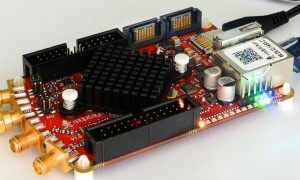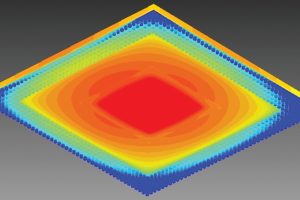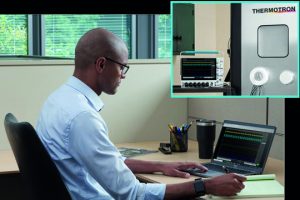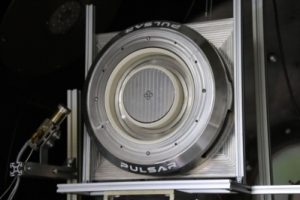
The board can be configured as an oscilloscope, an arbitrary waveform generator or spectrum analyser by downloading open source software applications from an online marketplace created by Slovenia-based Red Pitaya.
The credit card-sized board uses a Xilinx Zynq processor with a dual ARM Cortex-A9 MPCore and programmable functions of an FPGA. It has two RF analogue I/O, four lower-bandwidth analogue I/O, as well as 16 general-purpose digital I/O ports. It supports Ethernet and includes a Micro SD slot.
Red Pitaya is creating an online market place of open-source test and measurement applications and already available are an oscilloscope, a spectrum analyser and arbitrary waveform generator.
It is also creating a repository of open-source code, instructions for use and tools for further development.
Funded on Kickstarter last year, Red Pitaya said it wants to “make instrumentation open and accessible to a much wider cross-section of users spanning enthusiasts, ham radio operators, education and start-ups, to established research and industry users”.
“We are developing instruments and supporting ecosystem to replace many expensive laboratory instruments. We believe that this will enable a community of developers, whose unleashed creativity will result in original and better instruments,” said Borut Bari?evi?, Red Pitaya co-founder and product manager.
The board runs the GNU/Linux operating system and can be programmed at different levels using a variety of software interfaces, including: HDL, C/C++, scripting languages, and HTML-based web interfaces.
“Red Pitaya is a truly innovative idea that is set to transform the test and measurement space,” said Philip Dock, Global Head of Product & Supplier Management at RS Components. “With a price tag of less than $500 it will be the first instrumentation product to hit the market that is accessible to the masses.”
The first commercial production of the Red Pitaya instrument and applications will be available exclusively from RS later this year.
 Electronics Weekly Electronics Design & Components Tech News
Electronics Weekly Electronics Design & Components Tech News



